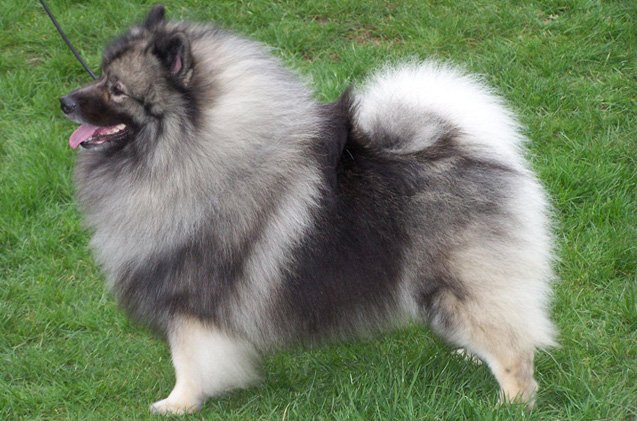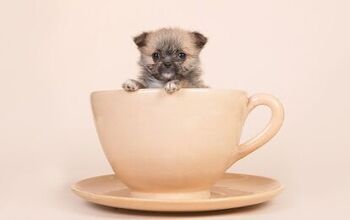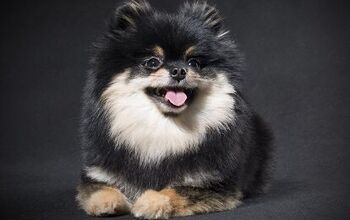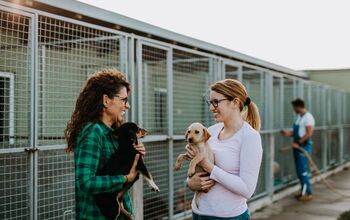Keeshond


About Keeshond
The Keeshond is a wonderful dog that is known by many names including the Foxdog, Wolfspitz, Dutch Keeshond, Dutch Barge Dog, Chien Loup, Laughing Dutchman and Smiling Dutchman. Whatever you prefer to refer to him as, this dog is a simply wonderful companion for many people.
His face makes the Keeshond look different from other breeds of dog. The Keeshond’s expressive face and markings that give him the appearance of wearing glasses are remarkable. He is a sweet fellow and makes a great addition to many households. Please continue reading to learn more about the Keeshond.
The Keeshond is a simply wonderful companion for many people.
The Keeshond’s origin is in Holland and it is truly an ancient breed of dog. In the 13th and 14th Centuries, farmers loved the Keeshond because they were assertive watchdogs and guarded the livestock as well as were safe companions for the family. Later, during the 1800s, Keeshonden were considered multi-purpose dogs as they would guard nearly anything including riverboats and farms.
The Keeshond is believed to have descended from several dogs including the Samoyed, Finnish Spitz, Norwegian Elkhound, Pomeranian, Chow Chow and Siberian Husky. The breed has been in existence for centuries.
Keeshonden do best on a high quality diet of dry kibble. Dry food helps eliminate plaque and tartar buildup which can cause cavities, gum problems and nasty doggy breath. A veterinarian or the dog’s breeder can help you to choose which food would provide the appropriate nutrition for your Keeshond.
The Keeshond is a fast learner that seems to be able to read his owner’s mind.
The Keeshond is a fast learner that seems to be able to read his owner’s mind. Although they do have an independent streak, with patience and kindness, this dog can be an incredibly obedient yet still fun-loving companion. He needs an owner who is caring and gentle. Repetitive training sessions that are calm and result in the dog getting some kind of yummy reward are most successful. Harsh words and treatment will get you nowhere with this breed. They require love, kindness and easy instruction during all training sessions. Positive reinforcement will have your Keeshond the picture perfect companion.
This dog can go from the home to the breed ring to the obedience in zero to sixty seconds. They also make great therapy dogs. Their adorable appearance coupled with their caring nature make them perfect for visiting ailing kids and adults in hospitals, rehabilitation facilities and nursing bills.
The average Keeshond weighs in at somewhere between 35 and 45 pounds. They stand between 17 and 18 inches tall at the withers.
The main job of the Keeshond is to be the constant, loving and loyal companion of his family. This is his primary reason for existence and he is rather good at it. Keeshonden are wonderful watchdogs as well. They will let their families know when anyone is approaching but they are not incessant barkers. The Keeshond might be on the small side but he will readily defend his family without concern for his own well-being.
Keeshonden are generally friendly dogs with friendly people. They will happily welcome strangers into their homes unless they feel that their families or they are threatened. This a social dog who enjoys interacting with people and other animals.
Keeshonden are not without health issues. They are generally healthy animals however; predisposed problems can prove to be detrimental. These diseases/disorders include Addison’s disease, Hip Dysplasia, Diabetes Mellitus, Progressive Retinal Atrophy, Cataracts, Hypothyroidism, Von Willebrand’s Disease, Allergies and Epilepsy. If left untreated, some of these issues can jeopardize the life of a Keeshond. Other ailment might be problematic but with proper care, medication and treatment, a dog can live a long, fulfilling and comfortable life.
The average lifespan of a Keeshond is 12 to 14 years.
Keeshonden do not need a boatload of exercise daily. Inside of a fenced backyard, coupled with a family member who loves to play fetch will provide the average Keeshond with all the running time he needs to stay healthy, happy and out of trouble. Without appropriate exercise, they can become unruly and rip things apart inside of the house. Nobody wants their home destroyed so at the very least, a few brisk walks daily will keep your dog content. Keep in mind that a Keeshond will be ready and raring to hop into the car to go to the park, shop at the home improvement store or select his own toys at the Pet Shop. Exercise shouldn’t be boring and repetitive. It should be spontaneous at times.
The main job of the Keeshond is to be the constant, loving and loyal companion of his family.
The American Kennel Club says: “An affectionate, good-natured companion, the Keeshond is outgoing and friendly with people and dogs, following the lead of their owners when welcoming strangers. The breed learns quickly and is energetic, requiring daily exercise”. In 1990, the Keeshond was recognized by the AKC and was accepted into the Non-Sporting Group.
The coat of the Keeshond is thick and luxurious. It is a double coated breed. The long and straight fur stands out from the thick and down-like undercoat. A Keeshond’s head is adorned with smooth and short hair. The lion-like mane is quite impressive, especially in male dogs.
The colors of the Keeshond are rather dramatic. The coats are always a mix of cream, gray and black. The coats of some dogs may be lighter or darker than others. No two coats are the same. The outer hair always has black tips, which is indicative to the breed. The illusion of this dog wearing glasses is an essential characteristic of this special breed.
Keeshond puppies are fun, active and quite funny too. Puppies needs to be socialized with people, animals and be introduced to a variety of noises and situations. Puppy kindergarten classes are a great idea as the pup will learn, you will learn and both of you get to socialize with other pet owners.
One of the good things about the Keeshond is that they are generally clean dogs. Crate training as a puppy will help you to housebreak him when you are home. They do not like soiling their sleeping areas so crate training is a good thing for puppies. Of course, adult dogs won’t need to be crated unless changes are being made to the home.

Amy Tokic, Editor of PetGuide.com, is a passionate animal lover and proud pet parent of Oscar, a Shih Tzu/Chihuahua cross, and Zed, a Japanese Chin. Her love of animals began in kindergarten, when she brought her stuffed dog Snoopy into class with her every day. Now, she writes about her adventures in pet ownership and tirelessly researches products, news and health related issues she can share with other animal enthusiasts. In her free time, Amy loves perusing used book and record stores, obsessing over the latest pet products available and chasing squirrels with wild abandon (a habit attributed to spending too much time with her pooches).
More by Amy Tokic

























